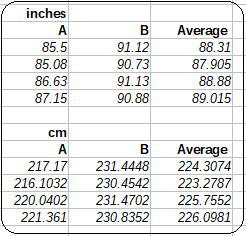| Home Login Register |
| Satellite Internet forum › Dish pointing and alignment › Prodelin 1383 conversion possibility to DTH LNB mount |
|
Pages: 1
|
Prodelin 1383 conversion possibility to DTH LNB mount(Read 3727 times) |
|
PETER
Member
★★ Offline Posts: 2 Kerala, India |
May 9th, 2020 at 6:34pm
|
| Back to top |
IP Logged
|
|
Admin1
YaBB Admin
★★★★★ Offline Posts: 1215 |
Reply #1 - May 9th, 2020 at 10:15pm
|
| Back to top |
IP Logged
|
|
PETER
Member
★★ Offline Posts: 2 Kerala, India |
Reply #2 - May 10th, 2020 at 6:45am
|
| Back to top |
IP Logged
|
|
Admin1
YaBB Admin
★★★★★ Offline Posts: 1215 |
Reply #3 - May 10th, 2020 at 9:00am
|
| Back to top |
IP Logged
|
|
Admin1
YaBB Admin
★★★★★ Offline Posts: 1215 |
Reply #4 - May 10th, 2020 at 9:26am
|
| Back to top |
« Last Edit: May 10th, 2020 at 2:39pm by Admin1 »
IP Logged
|
|
Admin1
YaBB Admin
★★★★★ Offline Posts: 1215 |
Reply #5 - May 10th, 2020 at 2:42pm
|
| Back to top |
IP Logged
|
|
Pages: 1
|
Email me: eric@satsig.net
Powered by YaBB 2.5.2!
YaBB Forum Software © 2000-. All Rights Reserved.
Disclaimer, Terms of Use and Privacy Forum User Agreement Forum rules Cookie policy.




